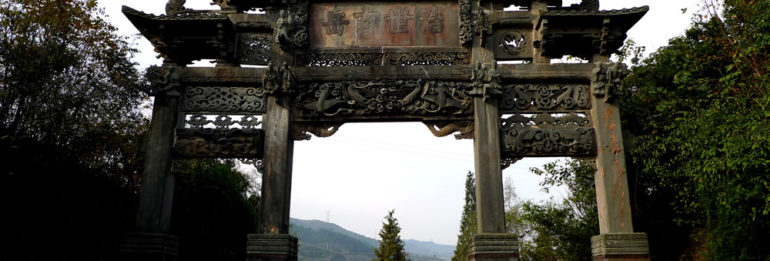In popular American usage, “kung fu” is often used in reference to any of a number of Chinese martial arts styles. But in fact, the word has a much deeper meaning.
Origin
The term “kungfu,’ or “gongfu” is a combination of two Chinese words - 功 (gōng) and 夫 (fū). On its own, gōng means hard work, meritorious achievement, or effort. Fū typical refers to man, but can have other uses. A strictly literal interpretation, therefore, would be “achievement or work of man.” It could also mean simply “work and effort.”
The combination of two first-tone words in Mandarin usually results in the second word reverting to a neutral tone. When applied to gōng and fū, fū reverts, giving us gōngfu. Sometimes appearing as 工夫, this takes on the more general usage rather than specifically a martial arts context.
This has the implication of a result achieved through strenuous work over a long time. The result can be a new or strengthened skill or discipline that takes a great deal of practice and patience.
Martial Arts
It is this last meaning that brings the term into the realm of martial arts. Mastery of any martial arts takes time, energy, focus, discipline, and practice. There was a shift in meaning from the end result, to the journey itself.
So, in this context, kung fu originally referred to the practice and learning of Chinese martial arts. Rather than describing the style of martial art itself, it was about the process of strengthening mind, body, and skill. Eventually, of course, it began to be a term for the fighting style rather than the act of training in that method.
There has existed a literal translation of the phrase “Chinese martial art” as we would use it today. It is 中国武术 zhōngguó wǔshù. A combination of this and 功夫 al gives us 功夫武術 (kung fu wu shu). This can be roughly translated as “skills of the (Chinese) martial arts.”
A Spectrum of Meaning
Today, kung fu has a fluid meaning. It can sometimes refer to that older, more literal use of the achieving of excellence by long study and discipline. This is not only the literal rendering, it can also be traced back to Neo-Confucianism in its highlighting of effort in education.
However, it can also still carry the context of the journey of that study and practice. Combining these various meanings gives us a more overarching understanding. It can be the goal, the journey, or even the state of being along the journey. It’s a sliding scale such that one can be said to have good kung fu, strong kung fu, or even bad kung fu.
This sliding scale idea means that the term is often used in more mundane activities. You can have a strong kung fu in calligraphy. It could be said that a chef’s kung fu is good in cooking. It finds usage in the name of a highly detailed and reverent tea ceremony called kung fu cha, or the Fujian tea ceremony.
On the other end of the scale, someone who is not diligent at a task would be said to have bad kung fu. A student failing in math would have bad kung fu in Algebra, for example.
* Shifu Greg Hatza has over 45 years of training in traditional Japanese and Chinese martial arts. If you are interested in learning Traditional Chinese kung fu, feel free to drop us a line or schedule a free class.


